Monday Memo: Gobble Gobble
By Holland Cooke
Consultant
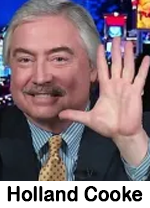 Running a successful radio station, hosting a show, or producing a podcast is a lot like hosting Thanksgiving dinner. You need a plan. You need to deliver something satisfying to a crowd with varying tastes. And most of all – if you get it right – you’ll have leftovers you can turn into even more value long after the main event.
Running a successful radio station, hosting a show, or producing a podcast is a lot like hosting Thanksgiving dinner. You need a plan. You need to deliver something satisfying to a crowd with varying tastes. And most of all – if you get it right – you’ll have leftovers you can turn into even more value long after the main event.
The Menu is the Strategy. You don’t just “wing it” on Thanksgiving. Same goes for your content. Who are you serving? What do they expect? Your content calendar is your shopping list. Your team is your kitchen crew. And if you’re still deciding what’s on the menu the morning of, don’t expect rave reviews.
Timing is the Secret Sauce. Get the turkey in too late, and the sides suffer. Hit “record” without a clear rundown, and the show flounders. Publish an episode at the wrong time? Lost in the noise. Stations, shows, and podcasts are all about flow and timing. Great pacing, clean execution, smart transitions. Just like the perfect meal, everything needs to hit the table hot and in the right order.
The Turkey is your Centerpiece. For a station, it’s your format or your tentpole talent. For a show, it’s the host or the day’s big segment. For a podcast, it might be your story structure or your featured guest. Nail the turkey, and people forgive a few lumpy mashed potatoes. Miss it – bland, dry, underwhelming – and no one remembers the green bean casserole.
The Sides are the Supporting Elements. News, weather, traffic, and imaging turn a decent meal into a memorable one. Great intros, tight sound design, and a well-timed punchline make your core content shine.
Different Tastes, One Table. Uncle Edgar wants deep-fried turkey. Your cousin’s vegan. Grandma’s still mad you skipped the marshmallows on the yams. Your audience is just as varied – P1 loyalists, casual browsers, podcast subscribers who never miss a week. You can’t be everything to everyone, but you can build a spread that makes multiple types of listeners feel seen. Know your audience segments. Serve accordingly.
Table Setting = Delivery Platform. Whether it’s FM, a podcast app, a smart speaker, or a website, presentation matters. Is the user experience smooth? Is the stream clean? Is the podcast art appealing? Are your links working? A cold plate on fine china is still cold. Don’t let great content get lost in clunky delivery.
Leftovers = Repurposing. You spent all that time prepping and recording. Don’t just serve it once. Chop up segments for social. Turn interviews into blog posts. Republish as “Best Of” content. Archive it smartly so people can find it later.
Leftover content, when handled right, can fuel long term engagement. Don’t throw away anything tasty just because the initial serving is over.
Thanksgiving reminds us that people crave connection, comfort, and a sense of occasion. So does your audience, whether they tune in live, stream on demand, or binge your podcast during a road trip.
So, plan well. Deliver hot. Serve generously. And whatever you do, don’t forget the gravy.
Happy Thanksgiving. Pass the ratings.
Holland Cooke (HollandCooke.com) is a consultant working the intersection of broadcasting and the Internet. Follow HC on Twitter @HollandCooke and connect on LinkedIn




 The drive to stream video of radio shows has always been risky. Remember your shock when you first saw one of your radio heroes? Video streaming can present a constant disconnect between the show in the listener’s head and the show on the stream. Many stations make the disconnect worse by streaming terrible video images. Combine the trauma of how a host really looks with a dreary TV show and the package cannot benefit the relationship between station and listener/viewer.
The drive to stream video of radio shows has always been risky. Remember your shock when you first saw one of your radio heroes? Video streaming can present a constant disconnect between the show in the listener’s head and the show on the stream. Many stations make the disconnect worse by streaming terrible video images. Combine the trauma of how a host really looks with a dreary TV show and the package cannot benefit the relationship between station and listener/viewer. right, two shows… one on the radio, one on the stream. Seamless and fun.
right, two shows… one on the radio, one on the stream. Seamless and fun.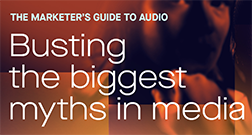 Audio advantage.” The guide provides data to counter prevailing myths that marketers often believe. Some examples include: 1) the notion that “apps have all the audience” is not true as “ad-supported platforms are key to marketer’s winning and Audacy’s 200 million+ is miles above Spotify (48.6M) and Pandora (41.2M)”; 2) “young people don’t listen to audio” isn’t true as 96% of Gen Z listen to audio daily – with 44% being daily radio users; and 3) “I can’t measure audio” is also false because marketers can “track, measure and analyze
Audio advantage.” The guide provides data to counter prevailing myths that marketers often believe. Some examples include: 1) the notion that “apps have all the audience” is not true as “ad-supported platforms are key to marketer’s winning and Audacy’s 200 million+ is miles above Spotify (48.6M) and Pandora (41.2M)”; 2) “young people don’t listen to audio” isn’t true as 96% of Gen Z listen to audio daily – with 44% being daily radio users; and 3) “I can’t measure audio” is also false because marketers can “track, measure and analyze 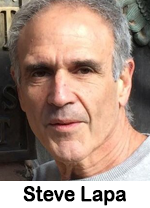 It’s complicated, this whole Federal Trade Commission ruling potentially banning the non-compete. Considering where you stand on the non-compete concept, it’s really all about evaluating the five “C” profile of your media business.
It’s complicated, this whole Federal Trade Commission ruling potentially banning the non-compete. Considering where you stand on the non-compete concept, it’s really all about evaluating the five “C” profile of your media business. I’m no expert, but I do have a theory.
I’m no expert, but I do have a theory. Research shows that readers to trade publications like articles with five bullet points. Here are my five bullet points for 2024. If these were to be deployed, you could be thriving by the end of the year. These actions would increase sales and audience share.
Research shows that readers to trade publications like articles with five bullet points. Here are my five bullet points for 2024. If these were to be deployed, you could be thriving by the end of the year. These actions would increase sales and audience share.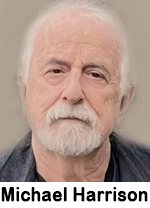
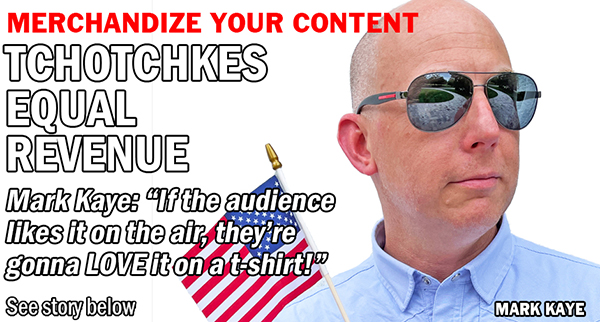
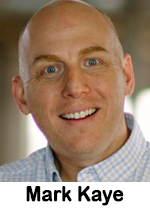 We have a saying around “The Mark Kaye Show” studio:
We have a saying around “The Mark Kaye Show” studio: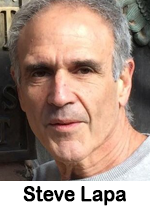 Which is the more important “check the box” trait – persistence or passion?
Which is the more important “check the box” trait – persistence or passion?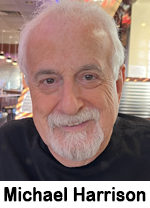 Many years ago, I received a late-night call from a legendary radio talk show host who had just been let go by management at the iconic major market station where he had been presiding over the airwaves for several decades. His ratings had begun to downtrend a bit, but he still was a big draw for audience and advertisers. He was one of the biggest names in talk radio history and his still-sizable audience loved him. Thus, the unexpected news of his severance blindsided him with a wallop and surprised the heck out of the biz. Everyone was buzzing about it.
Many years ago, I received a late-night call from a legendary radio talk show host who had just been let go by management at the iconic major market station where he had been presiding over the airwaves for several decades. His ratings had begun to downtrend a bit, but he still was a big draw for audience and advertisers. He was one of the biggest names in talk radio history and his still-sizable audience loved him. Thus, the unexpected news of his severance blindsided him with a wallop and surprised the heck out of the biz. Everyone was buzzing about it.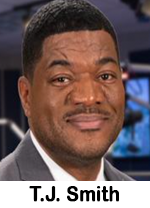 unsolved cases. He later served as press secretary for Baltimore County executive John Olszewski and ran for mayor of Baltimore in 2020. He takes over the midday show after Kimberly Klacik exited the position following seven months on the job. WBAL director of programming Jeff Wade says, “The WBAL audience has known and respected T.J. for years for his frank and honest dialogue on the issues that matter most to people living and working in Baltimore. Whether it’s policing, politics, or talking
unsolved cases. He later served as press secretary for Baltimore County executive John Olszewski and ran for mayor of Baltimore in 2020. He takes over the midday show after Kimberly Klacik exited the position following seven months on the job. WBAL director of programming Jeff Wade says, “The WBAL audience has known and respected T.J. for years for his frank and honest dialogue on the issues that matter most to people living and working in Baltimore. Whether it’s policing, politics, or talking  Orioles and Ravens, we can’t think of anyone better suited to sit behind the WBAL microphone weekdays from 10:00 am to 2:00 pm.” Smith comments, “As a native Baltimorean who has gone to school, worked, run for office and even suffered loss in the city, I’m very familiar with the feel of the public from west Baltimore to the waterfront. I couldn’t be more excited to join the WBAL Radio family. I look forward to delivering straight talk and sharing my opinion based on my experience working in government and in law enforcement. I’m ready to ‘tell it like it is’ in a reasonable manner.”
Orioles and Ravens, we can’t think of anyone better suited to sit behind the WBAL microphone weekdays from 10:00 am to 2:00 pm.” Smith comments, “As a native Baltimorean who has gone to school, worked, run for office and even suffered loss in the city, I’m very familiar with the feel of the public from west Baltimore to the waterfront. I couldn’t be more excited to join the WBAL Radio family. I look forward to delivering straight talk and sharing my opinion based on my experience working in government and in law enforcement. I’m ready to ‘tell it like it is’ in a reasonable manner.” pandemic. His expertise in national and global affairs was immediately recognized and appreciated by the WBT audience, but it was his fair analysis of the day’s news and his whole-hearted support of the Charlotte community in those difficult times that allowed him to become a welcomed part of the lives of the audience.” Winterble comments, “From the moment I walked into the legendary WBT Radio it felt like home. I am so
pandemic. His expertise in national and global affairs was immediately recognized and appreciated by the WBT audience, but it was his fair analysis of the day’s news and his whole-hearted support of the Charlotte community in those difficult times that allowed him to become a welcomed part of the lives of the audience.” Winterble comments, “From the moment I walked into the legendary WBT Radio it felt like home. I am so  thankful for the welcome and support I received from our clients, listeners, and incredible staff over these past three years. I am truly honored to continue this relationship with the best creators in the business. I am particularly grateful for the support of Urban One/Radio One, and Marsha Landess, Alfred Liggins, David Kantor, Mike Schaefer, and Kraig Kitchin in helping me to realize this professional dream. I can’t wait to see what the future holds for all of us.”
thankful for the welcome and support I received from our clients, listeners, and incredible staff over these past three years. I am truly honored to continue this relationship with the best creators in the business. I am particularly grateful for the support of Urban One/Radio One, and Marsha Landess, Alfred Liggins, David Kantor, Mike Schaefer, and Kraig Kitchin in helping me to realize this professional dream. I can’t wait to see what the future holds for all of us.”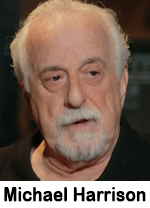 The embarrassing situation and accompanying financial vulnerability being faced by our colleagues at FOX News is a high-profile example of the consequences of audience “targeting” that has become the common positioning strategy in today’s competitive media marketplace. The process is simple: You give the specifically targeted audience what it wants, not necessarily what it needs, even if what it wants is of dubious quality or unhealthy and – in the case of political talk media – untrue. It is a problematic, unsavory practice that has been brewing in our industry for years and, in the case of FOX, the proverbial toxicity has just hit the fan.
The embarrassing situation and accompanying financial vulnerability being faced by our colleagues at FOX News is a high-profile example of the consequences of audience “targeting” that has become the common positioning strategy in today’s competitive media marketplace. The process is simple: You give the specifically targeted audience what it wants, not necessarily what it needs, even if what it wants is of dubious quality or unhealthy and – in the case of political talk media – untrue. It is a problematic, unsavory practice that has been brewing in our industry for years and, in the case of FOX, the proverbial toxicity has just hit the fan. the 3:00 pm to 6:00 pm slot currently held by Westwood One talk host Mark Levin. Sanchez says, “It is a thrill to be dominating my daypart in the format and I feel my audience growing exponentially right now. It’s a pleasure serving the Las Vegas market with the legendary station KDWN as my flagship.”
the 3:00 pm to 6:00 pm slot currently held by Westwood One talk host Mark Levin. Sanchez says, “It is a thrill to be dominating my daypart in the format and I feel my audience growing exponentially right now. It’s a pleasure serving the Las Vegas market with the legendary station KDWN as my flagship.”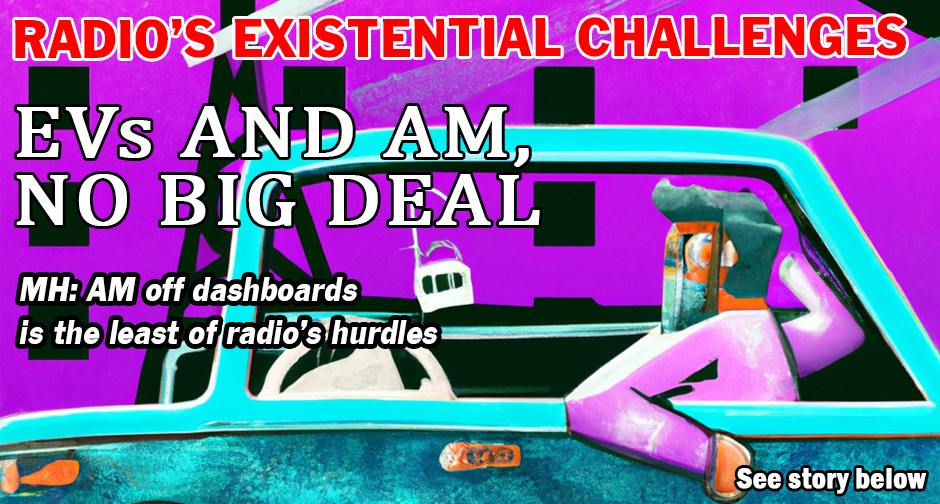
 piece’s “background” information and premises. In the article, Harrison supports the observation that the sale of EVs constitutes a small fraction of the current automotive marketplace and it will be years before they achieve a critical mass to impact the health of AM radio. In the meantime, Harrison asserted at this morning’s meeting of the TALKERS editorial board, “There are far more immediate existential threats to AM radio, not to mention FM radio, with which the broadcasting industry must contend.” He points out, “Relevance and identity! AM radio being dumped from dashboards is an innocuous thing to worry about. FM radio will be dumped from the dashboard as well… the entire idea of a radio-exclusive appliance is on the verge of obsolescence… and we’re not just talking about electric vehicles – we’re talking about all vehicles! We’re faced with an all-encompassing computer system at the fingertips and voice control of the driver and passengers.” Harrison continues, “In the meantime, today’s media consumers are savvy enough to know how to find their entertainment and information brands via the combination of Bluetooth and smartphone. Thus, the challenge facing both AM and FM radio – two increasingly irrelevant designations – is to maintain the importance, distinguishability and brand of the medium itself – R-A-D-I-O – and not let it get lost in an endless ocean of options available to the potential audience.”
piece’s “background” information and premises. In the article, Harrison supports the observation that the sale of EVs constitutes a small fraction of the current automotive marketplace and it will be years before they achieve a critical mass to impact the health of AM radio. In the meantime, Harrison asserted at this morning’s meeting of the TALKERS editorial board, “There are far more immediate existential threats to AM radio, not to mention FM radio, with which the broadcasting industry must contend.” He points out, “Relevance and identity! AM radio being dumped from dashboards is an innocuous thing to worry about. FM radio will be dumped from the dashboard as well… the entire idea of a radio-exclusive appliance is on the verge of obsolescence… and we’re not just talking about electric vehicles – we’re talking about all vehicles! We’re faced with an all-encompassing computer system at the fingertips and voice control of the driver and passengers.” Harrison continues, “In the meantime, today’s media consumers are savvy enough to know how to find their entertainment and information brands via the combination of Bluetooth and smartphone. Thus, the challenge facing both AM and FM radio – two increasingly irrelevant designations – is to maintain the importance, distinguishability and brand of the medium itself – R-A-D-I-O – and not let it get lost in an endless ocean of options available to the potential audience.”  In last week’s column,
In last week’s column, 
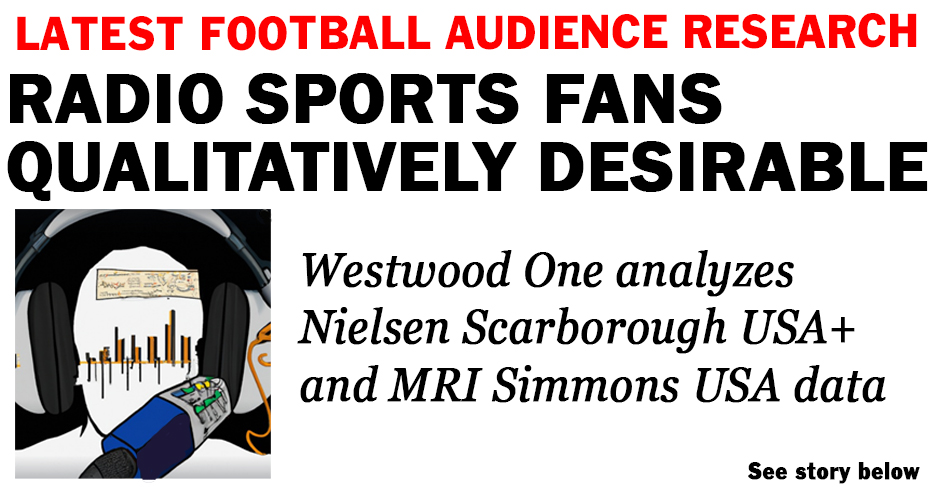
 NFL, and this year’s Super Bowl coverage marks the 50th time that the network will broadcast the game. Some of the key takeaways from this study are: 1) NFL postseason AM/FM radio listeners are a desirable group of consumers: They are more likely to work full time and have higher disposable incomes compared to NFL postseason TV viewers; 2) The NFL postseason AM/FM radio audience is more engaged with sports: MRI Simmons finds NFL postseason AM/FM radio listeners attend more sporting events, seek out sports information on their phones more often, and play more fantasy sports than NFL postseason TV watchers. The higher levels of engagement translate into greater advertising effectiveness; and 3) NFL postseason AM/FM radio listeners are more likely to make purchases across key consumer categories: Compared to the NFL postseason TV audience, AM/FM radio delivers more consumers who are likely to buy a new or used vehicle, start a new business, or hire a financial advisor. You can see the complete report
NFL, and this year’s Super Bowl coverage marks the 50th time that the network will broadcast the game. Some of the key takeaways from this study are: 1) NFL postseason AM/FM radio listeners are a desirable group of consumers: They are more likely to work full time and have higher disposable incomes compared to NFL postseason TV viewers; 2) The NFL postseason AM/FM radio audience is more engaged with sports: MRI Simmons finds NFL postseason AM/FM radio listeners attend more sporting events, seek out sports information on their phones more often, and play more fantasy sports than NFL postseason TV watchers. The higher levels of engagement translate into greater advertising effectiveness; and 3) NFL postseason AM/FM radio listeners are more likely to make purchases across key consumer categories: Compared to the NFL postseason TV audience, AM/FM radio delivers more consumers who are likely to buy a new or used vehicle, start a new business, or hire a financial advisor. You can see the complete report 